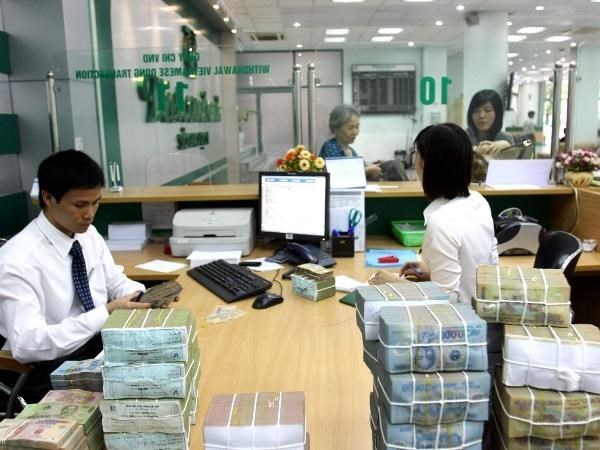Commercial banks should stay prudent with BOT projects
Hanoi (VNA) – Commercial banks are advised to have meticulous consideration before lending build-operate-transfer (BOT) and Build-Transfer (BT) infrastructure projects as outstanding loans for the projects are likely at risk of turning into non-performing ones, according to insiders.
 Commercial banks must thoroughly consider lending BOT and BT proejcts. (Photo: VietnamPlus)
Commercial banks must thoroughly consider lending BOT and BT proejcts. (Photo: VietnamPlus)
Banks often mobilise short-term capital for medium and long-term loans for BOT and BT transport projects which can last up to 10-15 years. Therefore, if the loans are too big, it could lead to risks, including liquidity shortages.
Concerted efforts to arrange capital
At present, capital arrangement for the Trung Luong – My Thuan expressway developed under the BOT model is posing great challenge for the investors.
Therefore, the State Bank of Vietnam, together with several commercial banks, the People’s Committee of Tien Giang province and contractors, has worked to remove bottlenecks for the project.
Although commercial banks including VietinBank, BIDV, Agribank and VPBank clinched a credit package worth 6.85 trillion VND (293.6 million USD), accounting for 70 percent of the project value, the capital has not been disbursed yet due to a multitude of problems.
According to Tran Van Tan, a member of Vietinbank’s Board of Directors, difficulties in legal procedures such as changes in investment capital, payback measures, and proportion of investors’ capital contribution have made the credit sponsorship contract to be adjusted in line with current regulations.
Vietinbank commits to keeping close watch and providing sufficient capital as per the signed credit contract, he added.
However, the investors need to ensure 30 percent of their project’s capital, as well as have a detailed plan for toll collection and payback measures. They must prioritise payment for banks when generating revenue while making detailed account of their toll collection activities.
Agreeing to continue pouring capital into the project, a BIDV representative said the investors should work with Vietinbank – the credit arranger to complete legal investment procedures.
Deputy Governor of the State Bank of Vietnam Dao Minh Tu held that although the central bank does not encourage large amounts of capital for potentially-risky areas such as real estate and infrastructure, commercial banks will accompany investors and localities so that strategic projects that play an important role in the socio-economic development like Trung Luong – My Thuan Expressway are implemented on schedule.
For the North-South Expressway, as the transport ministry cancelled open international bidding in favour of homegrown investors, commercial banks need to solve the capital problem to ensure safe credit, Tu said.
A myriad of BOT transport projects in the north that need commercial banks’ attention such as Chi Lang – Huu Nghi border gate highway (8 trillion VND), Dong Dang – Tra Linh highway (20 trillion VND), and Hoa Binh – Moc Chau (22 trillion VND), among others.
 Illustrative photo (Photo: VNA)
Illustrative photo (Photo: VNA)
Commercial banks must be careful with BOT, BT transport projects
A big question raised for commercial banks is capital adequacy ratio (CAR), Tu said, explaining they are mobilising short-term capital for medium and long-term loans while loans for BOT and BT project are too large, reaching up to thousands of trillions of VND.
Besides, banks are not able to control quality of the projects, which mean they could not manage capital loss during the construction progress. Therefore, toll collection would be more difficult as traffic flow in some roads is lower than expected or traffic participants do not accept the fees applied by investors.
Several banks said that slow site clearance delay BOT projects, making them adjust loan term and payback period, thus affecting their revenue.
Furthermore, many BOT projects are suffering heavy loss due to unsound policies and inconsistent planning, forcing commercial banks to become more prudent.
According to Nguyen Quoc Hung, head of the State Bank of Vietnam’s Credit Department, total outstanding debt for BOT projects was 99 trillion VND as of the end of July, and the amount was forecast to fall further because the central bank asked credit institutions to tightly control capital for BOT and BT transport projects.
“Banks will not take out any loans for projects with weak investors and having vague feasibility”, Hung said.
Tu stressed that the banking sector stands ready to loan infrastructure projects, including BOT ones; however, it is necessary to ensure safe operation and capital adequacy ratio.
In a bid to increase BOT loans, commercial banks need to increase their charter capital, which is a tough work. However, with banks who are able to settle the capital problem, it is still difficult for them to pour 5-7 trillion VND into BOT projects, he added.
Experts suggested capital be mobilised from public investments, corporate bonds and shares for large transport infrastructure projects./.













